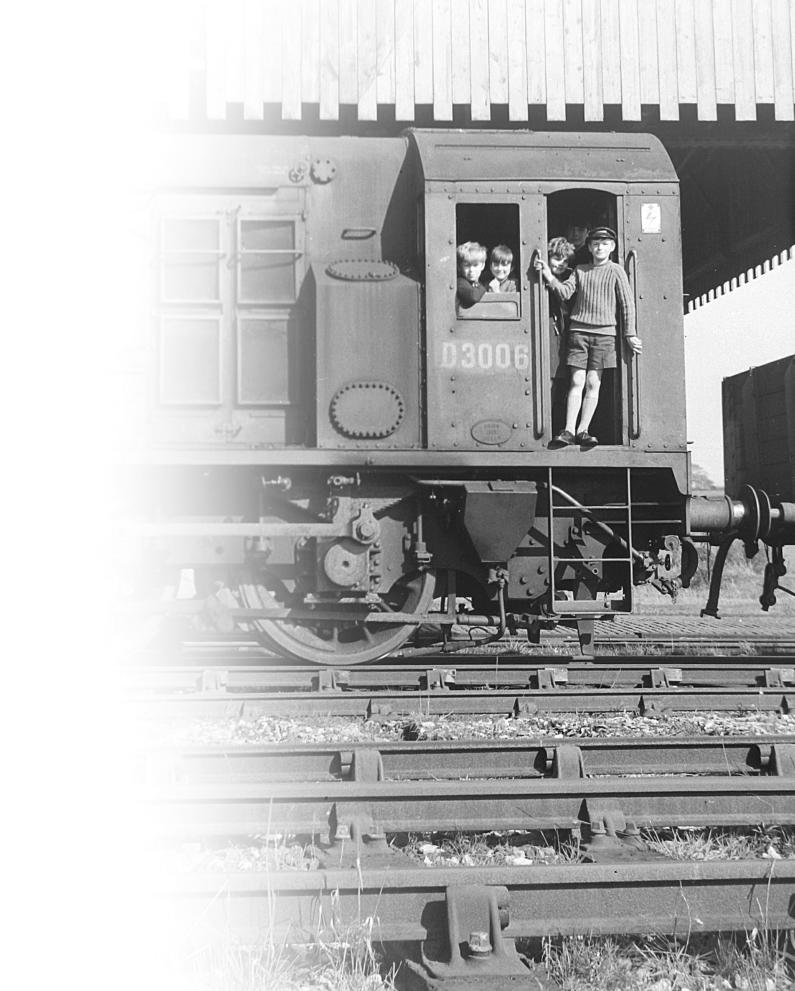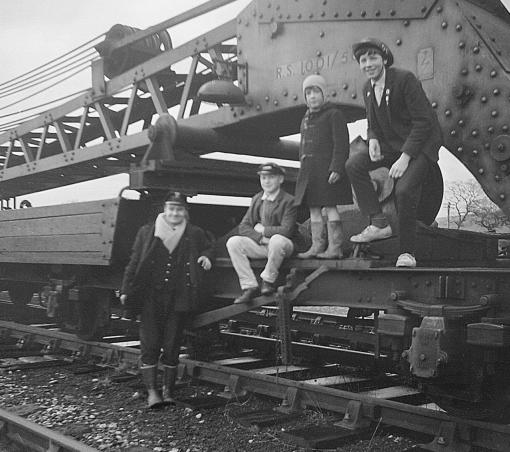


© www.white-coppice.co.uk 2022
Please read Feniscowles Station page also
Page 3 of 7




The Real Railway Children of Feniscowles
Page 3 of 7




The woods became another of our
play areas and we would regularly go
there. The Leeds Liverpool canal ran
close by to it and as you entered the
wood next to the canal, the path went
down to the river. However, one day
we went to the woods only to discover
the descending path had been
completely blocked by a thick
quagmire of mud and slime, about
4 feet deep. We went back home for
shovels and all helped to clear the
There were two quarries at Withnell, one for shale that
was used for the brickworks, the other a disused stone
quarry nearby. The disused one we called the ‘Moon
Country’. We would be taken on walks up there (past
what we called the ‘Fairy Stones’) and on the sides of
the quarry, which were not very steep, you could collect
sand of different colours and keep them in jars. Withnell
Brickworks was also the home of a tramp called ‘Paddy’.
I don’t know his story or how he became a tramp, but he
definitely lived there as once I spotted his clothes and
his few belongings above one of the kilns. Incidently, the
area above these kilns was really warm and cosy and so
in Winter I suppose it was the ideal place to be.
When we were not playing out, we were playing inside
and as we got older, this meant that we could go in the
‘middle room’ upstairs. This was a bedroom but in effect
became a ‘junk’ room and consisted of the following:
A stationery desk, a bookcase, a gramaphone player, a
drumkit, a photographic enlarger and two printing
presses (one an Adana hand press, the other a foot
operated treadle) complete with a few cases of type. The
drumkit was the first thing we would play on. It was a full
kit containing three drums, bass, cymbals and a
selection of drumsticks.
The printing presses were out-of-bounds. However, the
Adana did come in useful and if we asked nicely, my
Dad would print cards we could distribute, entitled ‘Mice
For Sale’. Yes, one of my brothers would be breeding
them and I think we offered a choice of different colours.
I seem to remember a white one with red eyes. The
gramaphone could only play 78s which we had stacks
of. The tunes all seemed the same and very ancient.
We had no idea how to use the enlarger. What I played
with from this room, for hours on end, was the wooden
sticks used for surrounding type in a metal frame for
printing.
The technical name for these sticks was ‘furniture’ and
were mainly of the same length and thickness. Laid end
to end, they were ideal for building roads. Or you could
make them into a wall, leaving gaps for your toy soldiers
so they would have a fortress to fire from.
Above The Lostock Hall steam crane, when it was used to re-rail some wagons
path. It turned out that the mud had come from a British Waterways
barge. They had been dredging the canal and had decided to deposit all
their muck down into the woods! Stanworth Woods had an unofficial main
path running through it. This was leftover from the days of workers using
it as a means of travel to Withnell Brickworks, which was situated at the
southern end of the woods. Workers from as far away as Mill Hill would
walk on the towpath of the canal, cross a bridge near the wood and carry
on through and onto the brickworks on a daily basis.
We used to go to the brickworks because there was a tip there and
sometimes you would find interesting things. One day we went up to find
some toys, a lorry and some small matchbox cars. We were overjoyed
and could not wait to get back home to play with them, especially as the
sky went very dark, started raining and then thundered and lightened all
the way back.
Withnell Brickworks has long since been demolished and the adjacent
clay quarry has been filled in with landfill. In fact it has been filled in that
much that an artificial hill has been created where the quarry once was.
Right: The Last Delivery. 3 of
the brothers (with 2 friends) on
the footplate of the shunter,
which was hauling the last train
of loaded pulp wagons to
Feniscowles goods yard, for the
Star Paper Mill in 1968. After the
above delivery, all pulp went via
road.





























